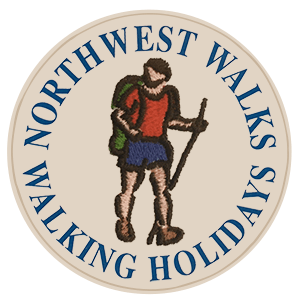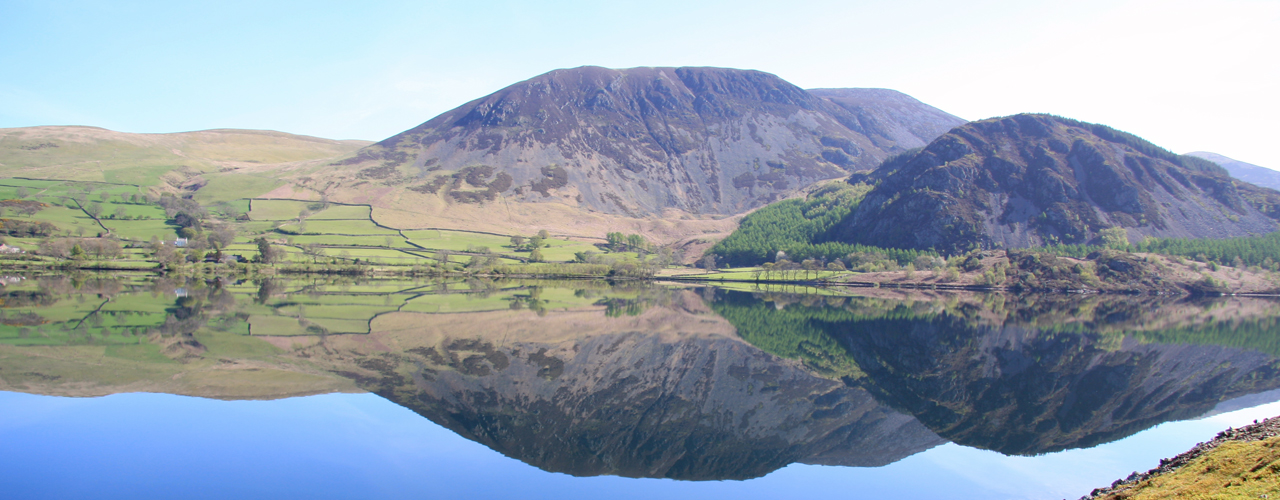Route Description
The Coast to Coast Walk is a 190-mile route crossing the North of England. The route was devised by renowned fell walker and writer Alfred Wainwright and has become one of the most inspiring long-distance walks in the world. The following is intended to provide further information about the route. Please note that all distances and heights in this document are approximate and, along with all the other information, are provided as an aid to describe the route.
Terrain
The valleys through the middle section, and the arable land in the eastern section make for straightforward walking, but the hills and mountains of the Lake District, Yorkshire Dales and North York Moors are rugged and gradients can be steep. The terrain on this trail is a diversity of rocky mountain paths, limestone plateau’s, country lanes, rolling hillsides and farmland.
Waymarking and Navigation
Due to its popularity the route has recently become a National Trail. Waymarking is limited and navigation skills are required with a GPS, guidebook, map and compass. Waypoints for the route can be downloaded onto your GPS.
St Bees
The seaside village of St Bees on the Cumbria (west) coast is the official starting point for Wainwright's world famous Coast to Coast walk.
St Bees to Cleator (village height above sea level 60M). Distance 9 miles
A plaque on the seafront marks the start of Wainwrights coast to coast walk. Tradition says to dip your toe in the sea and then collect a small pebble to carry with you to the east coast. The route heads north across the coastal path with views of Scotland and the Isle of Man. Leave the coastal path and head east towards the Lake District Mountains. The route passes through the villages of Sandwith and Moor Row to Cleator.
Cleator to Ennerdale Bridge (100M). Distance 5 miles
From Cleator the route starts to climb and a steep walk takes you to Dent (352M). Admire the views before continuing across the hilltop. Descend steeply down a forest track, follow Nannycatch Beck and then the roadside paths to Ennerdale Bridge.
Ennerdale Bridge (100M) to Rosthwaite (100M). Distance 14 miles
Follow the country lanes to Ennerdale Water then the rocky path along the banks of the Lake. At the far end of the Lake make for the forest track that climbs gradually along Ennerdale valley to the remote Black Sail Hut YHA (290M). The adventurous and experienced fell walkers can leave the track and climb to follow the alternative route over High Stile (807M), rejoining the main route near the top of Loft Beck. From the YHA continue to the bottom of Loft Beck and a steep ascent to the high point of the day at 600M. The views back to the sea are spectacular. Follow the rocky path across the fell and descend to Honister (330M). Continue descending into the beautiful Borrowdale valley to the village of Seatoller (120M) then follow the footpaths to Rosthwaite.
Rosthwaite (100M) to Grasmere (75M). Distance 10 miles
Follow the track alongside Stonethwaite Beck then the rocky path climbing steadily alongside Greenup Gill. Climb the steps and rocks (a bit tricky but not technical) to the left side of Lining Crag (500M) and admire the views to the north and east. Continue to Greenup Edge, today’s high point at 620M, and then descend the rocky path to the head of Far Easedale. You then have the option to follow the ridge walk across Calf Crag, Gibson Knott and Helm Crag before descending steeply into Grasmere or take the less arduous route down Far Easedale.
Grasmere (75M) to Patterdale/Glenridding (150M). Distance 8 miles
Follow the road to Mill Bridge then take the rocky path which climbs steadily alongside Tongue Gill to Grisedale Tarn (550M). The adventurous and experienced fell walkers can leave the route and climb higher to follow one of the alternative routes, either right over St Sunday Crag (841M), or left onto Helvellyn (950M) and then across the infamous Striding Edge. From Grisedale Tarn follow the route down hill alongside Grisedale Beck into Patterdale.
Patterdale (150M) to Shap (250M). Distance 16 miles
From Patterdale a sharp steep walk brings you to Boredale Hause (400M), the rocky path now climbs with less gradient past Angle Tarn and close to Satura Crag (600M), it descends to 500M and then climbs sharply again to round The Knott (739M). The route then turns sharp left onto High Street, an old Roman Road, and then right onto Kidsty Pike (780M) the highest point on route. From here look back across the Lake District and then turn to view the Eden Valley and the Pennine Mountains. Descend gradually at first then steeply down to Haweswater (250M), and follow the rocky path alongside the banks of the reservoir to Burnbanks. The Lake District Mountains are left behind and the gradients ease to cross the rolling farmland in Eden Valley. Follow the paths across undulating farmland, passing the ruins of Shap Abbey, to the village of Shap.
Shap (250M) to Orton (230M). Distance 8 miles
Follow the footpaths across the limestone plateau passing the secluded hamlet of Oddendale and the granite boulders deposited by ice age glaciers. Orton is a mile to the south of the route so if you are walking to Kirkby Stephen you can bypass the village.
Orton (230M) to Kirkby Stephen (180M). Distance 12 miles
Continue over rolling farmland and across the moors passing Sunbiggin, the hidden remains of several ancient settlements, and Smardale Bridge to the market town Kirkby Stephen.
Kirkby Stephen (180M) to Keld (350M). Distance 13 miles
Cross Franks Bridge and head for the lane which becomes a broad path onto the Pennine Moors and the summit of Nine Standards Rigg (662M). Depending on the time of year there are three routes over and around Nine Standards; green (avoiding the summit) for winter and spring, red for early summer, and blue for late summer and autumn. All routes cross peat, which is notoriously boggy in wet weather, before descending to the River Swale and the road in to Keld.
Keld (350M) to Reeth (200M). Distance 11 miles
From Keld you have a choice of routes. The main route stays high and crosses moorland that is scarred from a lead mining industry that disappeared at the end of the 19th century. From Keld the route descends to the river then climbs past Crackpot Hall and the ruins of Swinner Gill mine workings. It crosses the moor (580M) before dropping into Gunnerside Gill (400M) and then up onto Melbecks Moor (550M). From here a broad track descends gradually passing the ruins of Old Gang Smelting Mills to Surrender Bridge (350M) and another smelt mill. The last test of the day is to drop into Cringley Bottom, cross the river and then continue over the farmland to Reeth. The alternative route, is to follow the ‘royal road’ through Swaledale valley. The route passes through Gunnerside and a few pleasant small Yorkshire Dales villages.
Reeth (200M) to Richmond (150M). Distance 11 miles
This is a much easier day’s walk across rolling countryside passing Marrick Priory, Marske village and Whitecliffe wood to the largest town on route, Richmond.
Richmond (150M) to Danby Wiske (36M). Distance 13 miles
The route to Danby Wiske is almost level and generally easy going, it crosses farmlands to Bolton on Swale and then follows 7 miles of country lanes across the low lying Vale of Mowbray.
Danby Wiske (36M) to Ingleby Cross (80M). Distance 9 miles
The path remains easy going initially following the country lanes before returning to farm land. Take care crossing the busy A19 road.
Ingleby Cross (80M) to Clay Bank Top (250M). Distance 13 miles
This is the start of the crossing over the Cleveland Hills and the North York Moors, which are covered in purple heather during late summer months. The route follows the Cleveland Way trail and climbs steadily over Beacon Hill (299M) then descends into Scugdale (100M). The path climbs steadily at first then steeply onto Gold Hill (315M). It continues onto Carlton Moor (408M) before descending to Green Bank (300M). Once again it climbs going over Cringle Moor (430M), descends to 280M back up to 400M, down again to 300M and then a final climb through the Wainstones onto Hasty Bank (398M) before descending to the road at Clay Bank Top (250M). If all the up and down seems like too much hard work there is a path that contours round the hills from Green Bank to Clay Bank.
Clay Bank Top (250M) to Blakey Ridge (400M). Distance 9 miles
There is a steep ascent to Carr Ridge (390M) followed by a gradual rise to the summit of Round Hill (454M), the highest point on the North York Moors. The path descends to Bloworth Crossing (400M) were it leaves the Cleveland Way and continues on an almost level disused railway line across the desolate moors to the remote Lion Inn on Blakey Ridge.
Blakey Ridge (400M) to Glaisdale (120M). Distance 10 miles
After a few miles alongside the road the route follows a track across the heather clad moors. There is another road walk and then the route continues along a broad disused track gradually descending Glaisdale Moor into Glaisdale village.
Glaisdale (120M) to Grosmont (50M). Distance 4 miles
The route follows the River Esk passing through East Arnecliffe Wood to Egton Bridge, where it follows a once-toll road through the private estate of Egton Manor to Grosmont.
Grosmont (50M) to Littlebeck (50M). Distance 4 miles
The road (the 1 in 3) climbs steeply out of Grosmont to its high point on Sleights Moor (285M). There are wonderful views to Whitby and the sea. The path descends through heather covered moorland in to Littlebeck.
Littlebeck (50M) to Robin Hoods Bay. Distance 11 miles
The route follows a woodland trail. After the woodland the path rises and crosses a final stretch of heather moorland before following country lanes to the coast. This time the path turns south to follow a coastal path to Robin Hoods Bay and a final last descent to the sea. Please don't forget to follow tradition once more by dipping your boot in the sea and throwing your pebble in (that should baffle the geologists in years to come). Your challenge is complete.
Robin Hoods Bay
Robin Hoods Bay is a picturesque once fishing village and reputed smugglers haunt. Being built on the hillside the street from top to bottom of the village is the final steep descent/ascent on route.
More Information?
For more information or to make an enquiry, please don't hesitate to call or email us.


